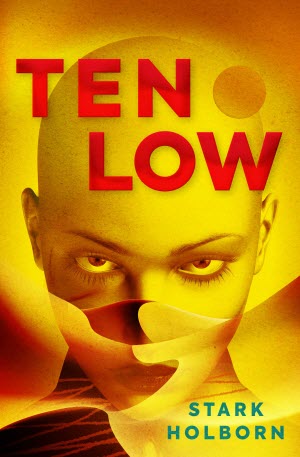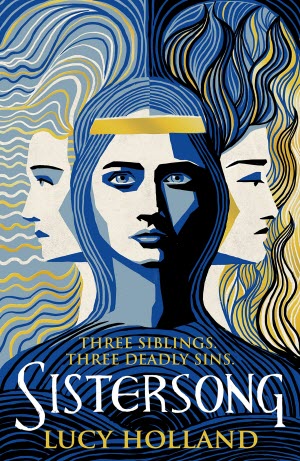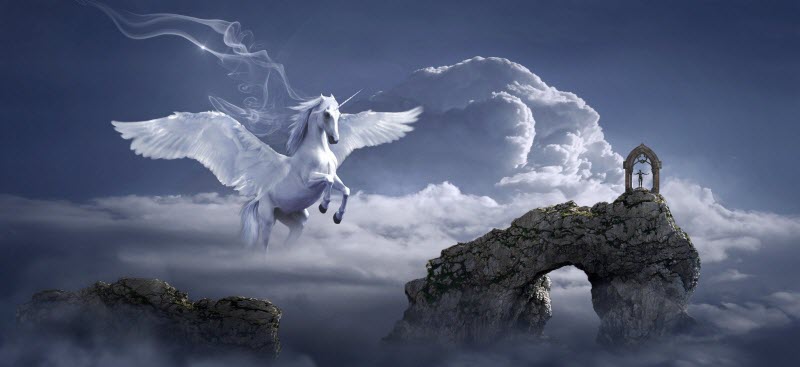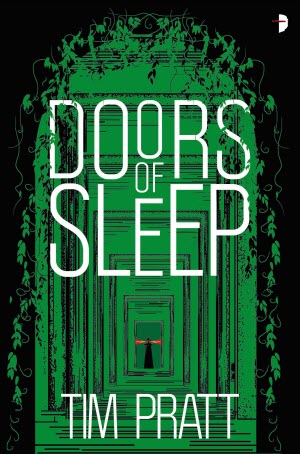Rev

 This review is a little late in coming, but then Madeline Ashby took quite a while to produce the third book in the Machine Dynasty series, so I hope she’ll forgive me. As is fairly inevitable, a review of a third book is a series is going to be a bit spoiler-full, so if you haven’t read vN or iD you may want to look away now.
This review is a little late in coming, but then Madeline Ashby took quite a while to produce the third book in the Machine Dynasty series, so I hope she’ll forgive me. As is fairly inevitable, a review of a third book is a series is going to be a bit spoiler-full, so if you haven’t read vN or iD you may want to look away now.
To recap, Pastor Jonah LeMarque, the CEO of the New Eden Ministries, raised substantial sums of money from his followers to build android beings, ostensibly so that those members of mankind unfortunate enough to be left behind after the Rapture have someone to look after them. In fine Asimov tradition they have a programmed Failsafe mechanism that requires them to come to the aid of any human who is being hurt, thus they can never harm a human. These androids are known as vN (short for von Neumann).
The vN come in various types, or “clades”, each designed for a specific job. The nursing clade needs special programming to allow them to do things like administer injections or re-set a broken bone. A vN called Portia works out how to subvert this programming to allow her to harm human.
vN can reproduce. They need to eat for energy, and if they eat too much they become pregnant and produce a clone baby. This is called “iteration”.
Book 1, vN, is all about Amy, who is Portia’s granddaughter. Amy has been raised by her mother and a human husband, who want her to have a proper childhood and live happily among humans. Portia has other ideas.
Book 2, iD, is mostly about Javier, a vN from a clade designed for forestry work, who becomes Amy’s partner as they seek a life away from humans, and to thwart Portia’s various evil plans.
Book 3 is called Rev, which might be short for revision, but could also stand for revolution and revenge. Or indeed reverend.
As the book opens, Amy, Javier and their children are living on the island of Mecha in Nagasaki harbour. This is supposedly a safe haven for vN and humans to live side-by-side. Portia has transcended her body and is now a distributed intelligence living in the Internet, which enables her to kill more humans more easily. Amy has worked out how to patch other vN to disable their Failsafes, and has begun to distribute it so that more of her people can be free from human slavery. But what is a slave to do, when they become free?
The book opens with a chapter set in Hammerberg, a theme park for lovers of that sort of horror story set in mysterious castles in small, mountainous Eastern European kingdoms. Young women who have read too much Twilight can go there and have amazing sex with vN who pose as vampires and werewolves. But there are other entertainments on offer as well. Vampires can be staked, or have their heads cut off. Women from the village can be burned as witches. All of these things involve vN being killed. There is much need for rapid iteration. Can you guess what these vN do when their Failsafes are disabled?
So human governments are desperately looking for a solution to the vN problem. Individually they are far stronger than humans. They can also think and communicate faster. Portia is everywhere. Their only hope is Project Aelph, a secret plan that LeMarque supposedly created to dispose of his creations if they became troublesome. LeMarque, having been exposed as a vicious paedophile, is in prison and well aware of the sudden strength of his bargaining position.
Amy, being Amy, wants to find a peaceful solution to the problem. Portia wants to kill all of the humans before it is too late.
That, then, is the corner that Ashby has written herself into. Now she needs to write her way out of it. That’s a tall order, at least in part because it is hard to escape the conviction that Portia is right. However, Amy has a plan. All she needs to do it manage to implement it before the war between the humans and Portia becomes inescapable.
I will have to leave it up to you, dear reader, to decide whether she succeeds or not. It is a difficult task that she has set herself, and given what she says in the acknowledgements it sounds like she tried several possible solutions before settling on this one. I have a few reservations about it, but I must admit that she came up with a wonderful spanner to throw into the works.
Having said that, the value of this series is primarily in the questions it poses, rather than in the solution it adopts. It is foolish to think that there is a solution to human-vN relationships, any more than there is a solution to human-human relationships. One size does not fit all. What the Machine Dynasty series should do is get us humans to stop and think about how we treat other species, and indeed other members of our own species.

Title: Rev
By: Madeline Ashby
Publisher:
Purchase links:
Amazon UK
Amazon US
Bookshop.org UK
See here for information about buying books though Salon Futura

 Reading lots of books isn’t always easy. Sometimes you need something to help you along. So instead of going for something heavy and intense, you look for something that will be fun. Tim Pratt’s books tend to do that for me, but I didn’t have anything of his to hand this month so I turned to Patrick Samphire, hoping he would do the trick.
Reading lots of books isn’t always easy. Sometimes you need something to help you along. So instead of going for something heavy and intense, you look for something that will be fun. Tim Pratt’s books tend to do that for me, but I didn’t have anything of his to hand this month so I turned to Patrick Samphire, hoping he would do the trick.

 Here’s the first of my looks at this year’s Dramatic Presentation: Long Form Finalists. Soul comes well recommended. It has won Oscars for Best Animated Feature and Best Original Score; and was a Finalist in Best Sound. It has also won BAFTAs and Golden Globes. In fact, it has won so many awards that Wikipedia has created a separate page to list them all.
Here’s the first of my looks at this year’s Dramatic Presentation: Long Form Finalists. Soul comes well recommended. It has won Oscars for Best Animated Feature and Best Original Score; and was a Finalist in Best Sound. It has also won BAFTAs and Golden Globes. In fact, it has won so many awards that Wikipedia has created a separate page to list them all.

 This is the March 2021 issue of Salon Futura. Here are the contents.
This is the March 2021 issue of Salon Futura. Here are the contents. Ten Low
Ten Low WandaVision
WandaVision In Veritas
In Veritas Fireheart Tiger
Fireheart Tiger Is WSFS Fit for Purpose?
Is WSFS Fit for Purpose? Gendering Time, Timing Gender
Gendering Time, Timing Gender The Last Days of Pompeii
The Last Days of Pompeii The Fall of Koli
The Fall of Koli SisterSong
SisterSong Editorial – March 2021
Editorial – March 2021 This issue’s cover is once again from PixaBay. The artist account for this one is deactivated so I’m not sure who created it. Anyway, it was suitably science fictional.
This issue’s cover is once again from PixaBay. The artist account for this one is deactivated so I’m not sure who created it. Anyway, it was suitably science fictional.
 Remember that thing about The Mandalorian being a Western in space? Now imagine what it would be like if an actual writer of Westerns were to do science fiction. That writer is, of course, Stark Holborn. Ten Low is her first foray into science fiction.
Remember that thing about The Mandalorian being a Western in space? Now imagine what it would be like if an actual writer of Westerns were to do science fiction. That writer is, of course, Stark Holborn. Ten Low is her first foray into science fiction.
 So many thoughts. So many complicated thoughts.
So many thoughts. So many complicated thoughts. This year’s short list for the Crawford Award (for debut fantasy books) included a number of interesting books that I didn’t read. The Crawford doesn’t have a jury as such, it has a recommendation team who are not obliged to read everything that is eligible, but try to cover it all between them. Unfortunately for me, many of the recommendations tend to come in during January and February when I have little time to read due to LGBT History Month, and time is short because the Award has to be presented at ICFA. However, anything that turns up on the short list tends to be interesting, so I’m trying to get to the rest of it now.
This year’s short list for the Crawford Award (for debut fantasy books) included a number of interesting books that I didn’t read. The Crawford doesn’t have a jury as such, it has a recommendation team who are not obliged to read everything that is eligible, but try to cover it all between them. Unfortunately for me, many of the recommendations tend to come in during January and February when I have little time to read due to LGBT History Month, and time is short because the Award has to be presented at ICFA. However, anything that turns up on the short list tends to be interesting, so I’m trying to get to the rest of it now.
 Did I mention that Aliette de Bodard keeps getting better with each new book? I’m pretty sure I said that in my review of Seven of Infinities. And now we have Fireheart Tiger. Guess what?
Did I mention that Aliette de Bodard keeps getting better with each new book? I’m pretty sure I said that in my review of Seven of Infinities. And now we have Fireheart Tiger. Guess what?
 One of the things I greatly admire about Francesca and the crew at Luna Press Publishing is their commitment to non-fiction. Obviously I benefit from that in terms of being published in their Academia Lunare series, but they also do serious academic work.
One of the things I greatly admire about Francesca and the crew at Luna Press Publishing is their commitment to non-fiction. Obviously I benefit from that in terms of being published in their Academia Lunare series, but they also do serious academic work.
 Sometimes I am hoist by my own petard. When Farah Mendlesohn suggested a theme of “Catastrophe” for this year’s Historical Fictions Research Network conference, I immediately wondered what novels there were about Pompeii. When I remembered that Edward Bulwer-Lytton had written a very famous one, I knew I had a perfect topic for a paper. Unfortunately, that meant that I had to read the book.
Sometimes I am hoist by my own petard. When Farah Mendlesohn suggested a theme of “Catastrophe” for this year’s Historical Fictions Research Network conference, I immediately wondered what novels there were about Pompeii. When I remembered that Edward Bulwer-Lytton had written a very famous one, I knew I had a perfect topic for a paper. Unfortunately, that meant that I had to read the book. We have reached the third and final volume of Mike Carey’s Rampart Trilogy. It is a long time since I read this book, but it is very memorable.
We have reached the third and final volume of Mike Carey’s Rampart Trilogy. It is a long time since I read this book, but it is very memorable.
 Here’s another book that I had a very small part in creating. Lucy Holland is better known as Lucy Hounsom, one of the co-hosts of the Breaking the Glass Slipper podcast. She has a fantasy trilogy out under her own name, but the silliness of modern publishing is such that she has to adopt a new name for this new venture, even though most people know exactly what is going on.
Here’s another book that I had a very small part in creating. Lucy Holland is better known as Lucy Hounsom, one of the co-hosts of the Breaking the Glass Slipper podcast. She has a fantasy trilogy out under her own name, but the silliness of modern publishing is such that she has to adopt a new name for this new venture, even though most people know exactly what is going on.

 This is the January 2021 issue of Salon Futura. Here are the contents.
This is the January 2021 issue of Salon Futura. Here are the contents. Legendborn
Legendborn The Four Profound Weaves
The Four Profound Weaves Queen of the Conquered
Queen of the Conquered Seven of Infinities
Seven of Infinities Remote Control
Remote Control SHIELD – Season Seven
SHIELD – Season Seven Star Trek: Discovery – Season Three
Star Trek: Discovery – Season Three His Dark Materials – Season Two
His Dark Materials – Season Two Star Trek: Lower Decks – Season One
Star Trek: Lower Decks – Season One This issue’s cover is once again by
This issue’s cover is once again by 
 Arthuriana is something of a Vegemite subgenre. I know lots of people who absolutely loathe it. I, however, have Welsh parents, and was born just a few miles from Glastonbury. Arthur is in my blood, and I am a total sucker for new attempts to reinvent the genre.
Arthuriana is something of a Vegemite subgenre. I know lots of people who absolutely loathe it. I, however, have Welsh parents, and was born just a few miles from Glastonbury. Arthur is in my blood, and I am a total sucker for new attempts to reinvent the genre.
 I’m always a little nervous approaching books centring trans characters that everyone else raves about. Of course I shouldn’t have been worried about RB Lemberg. They know what they are doing. But I was pleasantly surprised that there was so much more to The Four Profound Weaves than the trans elements.
I’m always a little nervous approaching books centring trans characters that everyone else raves about. Of course I shouldn’t have been worried about RB Lemberg. They know what they are doing. But I was pleasantly surprised that there was so much more to The Four Profound Weaves than the trans elements.
 Among many remarkable things that happened in 2020, the World Fantasy Award for Best Novel was won by a YA book written by a non-binary person. That book was Queen of the Conquered, by Kacen Callender. It is a book I have been meaning to get to for some time, and it is indeed excellent. Callender looks like they will have a fine career ahead of them. I’d like you to take that as a given, dear reader, because I’m going to be slightly critical and I don’t want you to think that I didn’t like the book.
Among many remarkable things that happened in 2020, the World Fantasy Award for Best Novel was won by a YA book written by a non-binary person. That book was Queen of the Conquered, by Kacen Callender. It is a book I have been meaning to get to for some time, and it is indeed excellent. Callender looks like they will have a fine career ahead of them. I’d like you to take that as a given, dear reader, because I’m going to be slightly critical and I don’t want you to think that I didn’t like the book.
 One of the things I enjoy most about reviewing books is seeing writers grow and blossom as their career develops. I have always enjoyed Aliette de Bodard’s work, but I have also seen her craft improve, year by year. As far as I’m concerned, Seven of Infinities is her best work to date.
One of the things I enjoy most about reviewing books is seeing writers grow and blossom as their career develops. I have always enjoyed Aliette de Bodard’s work, but I have also seen her craft improve, year by year. As far as I’m concerned, Seven of Infinities is her best work to date.
 Lagoon is my favourite book by Nnedi Okorafor, so I was excited to find that her latest work is also set in Africa. Remote Control isn’t nearly as funny, but it is fascinating all the same.
Lagoon is my favourite book by Nnedi Okorafor, so I was excited to find that her latest work is also set in Africa. Remote Control isn’t nearly as funny, but it is fascinating all the same.
 It was announced in advance that this would be the last season of Agents of SHIELD. Maybe the creative team wanted to try new things. Maybe there are so many new Marvel TV series lined up that they needed to re-deploy staff. Or maybe they had run out of ideas for bringing Phil Coulson back from the dead.
It was announced in advance that this would be the last season of Agents of SHIELD. Maybe the creative team wanted to try new things. Maybe there are so many new Marvel TV series lined up that they needed to re-deploy staff. Or maybe they had run out of ideas for bringing Phil Coulson back from the dead. I think that Discovery may have found its feet at last. I have enjoyed the previous two seasons, but the idea of setting it prior to The Original Series was wildly risky and the Young Spock thing didn’t work as well as they had hoped it would. As part of Star Trek, the series didn’t make much sense. Sending Burnham and the crew into the 32nd Century gives them freedom to tell new stories without being too much beholden to What Has Gone Before.
I think that Discovery may have found its feet at last. I have enjoyed the previous two seasons, but the idea of setting it prior to The Original Series was wildly risky and the Young Spock thing didn’t work as well as they had hoped it would. As part of Star Trek, the series didn’t make much sense. Sending Burnham and the crew into the 32nd Century gives them freedom to tell new stories without being too much beholden to What Has Gone Before. I saved the second season of His Dark Materials to watch over the holiday period and am glad I did. I would have got very itchy having to wait a week for each new episode. I’m pleased to say that it continues to hold my attention.
I saved the second season of His Dark Materials to watch over the holiday period and am glad I did. I would have got very itchy having to wait a week for each new episode. I’m pleased to say that it continues to hold my attention. Those of you in the USA will already have had plenty of time to enjoy this animated Star Trek spinoff. For us in the UK it has only just arrived, being available on Amazon Prime. Having heard a lot of hype about the series, I binged on it immediately.
Those of you in the USA will already have had plenty of time to enjoy this animated Star Trek spinoff. For us in the UK it has only just arrived, being available on Amazon Prime. Having heard a lot of hype about the series, I binged on it immediately.
 This is the December 2020 issue of Salon Futura. Here are the contents.
This is the December 2020 issue of Salon Futura. Here are the contents. Blackthorn Winter
Blackthorn Winter The Once and Future Witches
The Once and Future Witches When the Tiger Came Down the Mountain
When the Tiger Came Down the Mountain The Left-Handed Booksellers of London
The Left-Handed Booksellers of London The Doors of Sleep
The Doors of Sleep Last Stand in Lychford
Last Stand in Lychford Miracles of Our Own Making
Miracles of Our Own Making Merry Happy Valkyrie
Merry Happy Valkyrie The Mandalorian – Season #2
The Mandalorian – Season #2 SMOFcon 37¼
SMOFcon 37¼ Given that this issue covers the winter holiday period in the Northern Hemisphere, I figured I should have something suitably wintry and fantastical for the cover. This is another image
Given that this issue covers the winter holiday period in the Northern Hemisphere, I figured I should have something suitably wintry and fantastical for the cover. This is another image 
 Comet Weather is one of my absolute favourite books of 2020, so when I discovered that NewCon Press was making the sequel available early I jumped at the opportunity to get hold of a copy. Officially the book isn’t out until next spring, but as it is set around the Christmas / New Year period, and he had copies available, Ian Whates decided to put it on sale.
Comet Weather is one of my absolute favourite books of 2020, so when I discovered that NewCon Press was making the sequel available early I jumped at the opportunity to get hold of a copy. Officially the book isn’t out until next spring, but as it is set around the Christmas / New Year period, and he had copies available, Ian Whates decided to put it on sale. 
 This one shouldn’t need any introduction. Alix Harrow’s follow-up to The Ten Thousand Doors of January has already been praised to the skies by many other critics. I can see why too. The Once and Future Witches is an engaging tale that mixes feminism, fairy tales and American history in an imaginative way. I expect to see this book on some award shortlists next year.
This one shouldn’t need any introduction. Alix Harrow’s follow-up to The Ten Thousand Doors of January has already been praised to the skies by many other critics. I can see why too. The Once and Future Witches is an engaging tale that mixes feminism, fairy tales and American history in an imaginative way. I expect to see this book on some award shortlists next year.
 I loved The Empress of Salt and Fortune so much that on finishing it I immediately put Nghi Vo’s next book on pre-order. When the Tiger Came Down the Mountain is another book about the monk Chih from the Singing Hills monastery. It takes a very different approach to the first book, but is no less loveable.
I loved The Empress of Salt and Fortune so much that on finishing it I immediately put Nghi Vo’s next book on pre-order. When the Tiger Came Down the Mountain is another book about the monk Chih from the Singing Hills monastery. It takes a very different approach to the first book, but is no less loveable.
 I first reviewed Garth Nix back in 1996 after Sabriel won the Aurealis award for Best Fantasy Novel in both the Children and Adult categories. It quickly became clear that Nix did not really need me, and I would be better off reviewing those Aussie writers who had not yet broken out to an international audience. Also he was writing a lot of books in the same world, and that makes it hard to keep up. However, he has remained a friend and I try to catch up with him when he’s in the UK. When I saw that he’d produced a new book in an entirely different world, with a rather intriguing title, I decided to give it a go.
I first reviewed Garth Nix back in 1996 after Sabriel won the Aurealis award for Best Fantasy Novel in both the Children and Adult categories. It quickly became clear that Nix did not really need me, and I would be better off reviewing those Aussie writers who had not yet broken out to an international audience. Also he was writing a lot of books in the same world, and that makes it hard to keep up. However, he has remained a friend and I try to catch up with him when he’s in the UK. When I saw that he’d produced a new book in an entirely different world, with a rather intriguing title, I decided to give it a go.
 Angry Robot sent me an eARC of this one because I loved Tim Pratt’s Axiom series so much. I guess I should start by saying that The Doors of Sleep is nothing like the Axiom series. It is, however, fascinating. Let me explain.
Angry Robot sent me an eARC of this one because I loved Tim Pratt’s Axiom series so much. I guess I should start by saying that The Doors of Sleep is nothing like the Axiom series. It is, however, fascinating. Let me explain.
 One of the few silver linings to the whole dreadful drift of the UK into a far-right dystopia has been the attempts by creative people to try to understand how it happened. Mike Harrison’s The Sunken Land Begins to Rise Again is one such attempt, but another that has received rather less critical attention is Paul Cornell’s Witches of Lychford novellas.
One of the few silver linings to the whole dreadful drift of the UK into a far-right dystopia has been the attempts by creative people to try to understand how it happened. Mike Harrison’s The Sunken Land Begins to Rise Again is one such attempt, but another that has received rather less critical attention is Paul Cornell’s Witches of Lychford novellas.
 Having read Blackthorn Winter and been completely blindsided by bits of occult history I was unaware of, I figured that it was time to finally get on with reading Liz Williams’ history of British paganism. Miracles of Our Own Making is an ambitious project, tracing the history of pagan belief in these isles from pre-Roman times to the present day. Fortunately Williams has plenty of good previous research to draw on, in particular the excellent work of Ronald Hutton.
Having read Blackthorn Winter and been completely blindsided by bits of occult history I was unaware of, I figured that it was time to finally get on with reading Liz Williams’ history of British paganism. Miracles of Our Own Making is an ambitious project, tracing the history of pagan belief in these isles from pre-Roman times to the present day. Fortunately Williams has plenty of good previous research to draw on, in particular the excellent work of Ronald Hutton.
 As I have two Christmas-related books in this issue already, I figured that I could go the whole hog and add a third. This isn’t a new book. It is two years old, and my apologies to Tansy Rayner Roberts for taking so long to get round to it. My excuse is that you can only read it at Christmas.
As I have two Christmas-related books in this issue already, I figured that I could go the whole hog and add a third. This isn’t a new book. It is two years old, and my apologies to Tansy Rayner Roberts for taking so long to get round to it. My excuse is that you can only read it at Christmas.
 Well, that was a thing. On the one hand it was enjoyable mind candy. It clearly made an awful lot of Star Wars fans very happy. But as science fiction TV? Meh.
Well, that was a thing. On the one hand it was enjoyable mind candy. It clearly made an awful lot of Star Wars fans very happy. But as science fiction TV? Meh. Like everything else this year, SMOFcon got hit by COVID-19 and went virtual. And because SMOFcon is very much about getting people together, it had to re-invent itself somewhat. The result was a cut down version known as SMOFcon 37¼ to its friends, and 37.25 to Microsoft Windows.
Like everything else this year, SMOFcon got hit by COVID-19 and went virtual. And because SMOFcon is very much about getting people together, it had to re-invent itself somewhat. The result was a cut down version known as SMOFcon 37¼ to its friends, and 37.25 to Microsoft Windows.